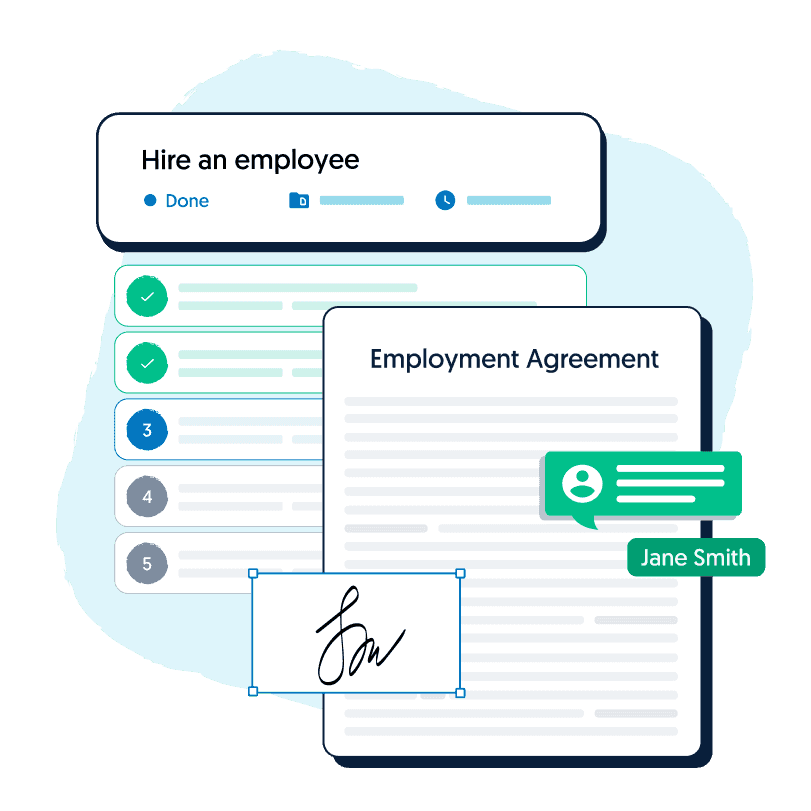As an employer in California, you are generally required to pay your employees at least minimum wage and overtime pay and provide them with meal and rest breaks, subject to certain conditions.
However, some of your employees may be exempt from these entitlements if their employment satisfies certain criteria under the California Labor Code relating to their salary, duties, independent judgment, and an exercise of discretion. These employees are known as ‘exempt’ employees.
Read on to learn how to classify employees as exempt or non-exempt, what entitlements you must provide non-exempt employees, and what the consequences are if you misclassify your employee.
Table of Contents
What is an exempt employee in California?
An employee exemption in California is when some employees are exempt from receiving certain entitlements, such as meal and rest breaks. The term refers to a category of employees set out in the Fair Labor Standards Act (FLSA).
An employee’s exemption status is attached to the nature of their employment, including their salary, duties, and independent judgment. You don’t need to formally register an employee’s exemption with an authority and you cannot make an employee exempt simply by making them sign a contract stating they agree to be exempt or relying merely on their job title.
As an employer, if you’re not too sure who meets the exemption criteria, you can contact the Department of Labor (DOL) to receive more information and understand the duties test.

Are you looking to hire an employee?
Use our "Hire an employee" workflow to complete and check off all your legal requirements
What is a non-exempt employee in California?
Non-exempt employees in California are entitled to at least minimum wage, overtime pay, and breaks. Each right will be explained in more detail.
1. Minimum wage
Under federal law, the federal minimum wage that employers must pay non-exempt employees is $7.25 per hour.
Under California labor laws, this minimum wage is much more favorable. Since January 1, 2017, the state minimum wage under California law for all industries increases yearly and depends on the number of employees in the business.
Currently, California law requires non-exempt employees that work for a business with 25 or fewer people to be paid a minimum of $14.00 per hour. The rate of pay if your business has more than 25 employees is $15.00 per hour.
Accordingly, it is important to regularly check the current minimum wage standards to ensure you are paying your non-exempt employees correctly.
2. Overtime requirements
Under federal law, there are certain overtime rules. You are required to pay your non-exempt employees an overtime rate of 1.5 times their regular hourly wage for each hour worked in excess of 40 during a work week.
Under state law, particularly in California, you must pay non-exempt employees 1.5 times their regular rate for working overtime, which includes:
- Any hours worked over 8 hours per day;
- Any hours worked over 40 hours in a workweek; or
- The first 8 hours worked on the seventh consecutive work day.
In addition, you must pay non-exempt employees twice their usual hourly rate for working over:
- 12 hours in a work day or;
- 8 hours on the seventh consecutive workday.
3. Breaks
Exempt and non-exempt employees are entitled to an unpaid 30-minute meal break if they work more than 5 hours a day and another meal break if they work 10 or more hours a day.
During the breaks, you must allow your employees to leave the work premises and relieve them of all work responsibilities.
The first meal break can be waived by consent from both you and the employee if the work shift is less than 6 hours, and the second meal break may be waived if the first break was taken and the employee does not work more than 12 hours in a day.
In addition, for every 4 hours worked, non-exempt employees must be given a paid 10-minute break.
If an employee is not given a break, you must pay them an additional 1 hour of pay at their regular hourly wage.
What happens if you misclassify a non-exempt employee as exempt in California?
If you have misclassified your employee as exempt, they can file a lawsuit in court or a Wage and Hour Complaint with California’s Division of Labour Standards (DLSE).
If this happens, you, as the employer, have the burden of proving that you made the right classification. If you are found to have mis-classified your employee as exempt, you may be ordered to pay a penalty as well as pay your employee damages for violating minimum wage, not paying overtime and not providing breaks, and you may need to cover their legal fees and court costs.
Under the California Workplace Retaliation Laws, you cannot retaliate against your employee if they make any claims or complaints against you for misclassification. This includes terminating their employment. If you do retaliate, your employee will have an additional cause of action against you.
How is an employee classified as exempt in California?
To determine whether an employee is an exempt worker under California law, there are three factors that need to be considered. They are:
- Minimum salary
- White collar duties
- Independent judgment
All three of these requirements need to be taken into account in order to classify an employee as exempt. To make it easy, we’ve discussed these elements in-depth below:
1. Minimum salary – What is the employee’s salary?
To be classified as exempt, the employee must be paid on an annual salary basis rather than an hourly basis, and a full-time employee must be paid a salary that is at least double the minimum wage in California.
However, you can’t simply make an employee exempt by paying them a salary rather than hourly rates, you need to consider the rest of the factors discussed below.
2. White collar duties – What are the employee’s primary duties?
California law provides the following categories of exempt employees. These categories depend on the duties the employee undertakes in the course of their employment. The exempt status applies to primary duties consisting of:
- Administrative tasks
- Executive tasks
- Professional tasks
Let’s discuss each one.
Executive Exemption
The Executive exemption requires employees’ to spend more than half of their time managing the company or department or subdivision of the company and regularly supervising at least two full-time employees.
They must also have the authority to hire or fire other employees or have particularly influential input into human resource decisions such as wages, hiring, firing, or promoting.
Administrative Exemption
The Administrative exemption applies to administrative employees who spend more than half of their time doing office or non-manual work which is specifically related to:
- Management or business operations – including marketing, human resources, or auditing and accounting.
- The employee’s primary duty must be performing office work related to the general business operations of the employer’s customers or the employer.
An employee in a school system or other educational institution may also be exempt if they perform administrative duties.
Professional Exemption
The professional exemption applies to employees licensed by the State of California to carry out their professional duties, such as lawyers, doctors, optometrists, dentists, architects, teachers, engineers, or accountants.
Employees can also be exempt under this category if they are ‘learned’ or ‘artistic’ professionals, meaning:
- they engage in predominantly intellectual work and;
- have extensive knowledge in a specialized field or engage in original and inventive work in an artistic or creative field.
3. Independent judgment- Does the employee use their independent judgment and discretion?
An exempt employee must use their discretion and independent judgment when carrying out their duties, meaning they make important decisions with respect to matters of significance after considering different options without direct supervision or instruction.
Other job-specific exemptions
There are certain jobs that have their own specific exemptions from overtime pay in California.
These include:
- Inside salespeople – these are people who sell the company’s products or services from the company’s office, which can include a home office, and who earn more than 1.5 times the minimum wage. In addition, more than half of their pay must come from sales commissions each work week. They may be non-exempt in weeks where commission does not constitute more than 50% of their pay.
- Outside sales people – these are people who are at least 18 years old and regularly work more than half their working time away from the company’s office, selling items or getting orders or contracts for the business’s service, products, or use of facilities.
- Computer professionals – The California Labor Code exempts computer software professionals from overtime and wage laws if they primarily engage in intellectual or creative work that requires discretion.
- Doctors and surgeons – Licensed physicians and surgeons are also exempt from overtime. However, it does not apply to doctors, interns, or residents who are covered by a collective bargaining agreement.
Frequently asked questions (FAQs)
Exempt vs Non-Exempt in California
An employee exemption in California is when some employees are exempt from receiving certain entitlements, such as overtime pay and rest breaks.
Non-exempt employees are those who must be paid hourly because their job duties do not fall within the overtime exemption. These employees have a right to be paid overtime wages.
What is the salary basis test?
Regardless of how many hours an employee works, this determines if an employee receives a guaranteed minimum wage/salary.
What is the salary level test?
Employees paid less than $913 per week are considered non-exempt under the new overtime rules.
Key takeaways
Whether an employee is classified as exempt or non-exempt has significant implications on what they are entitled to, and you, as an employer, can face the consequences for wrongly classifying your employees.
Therefore, it’s essential that you follow the above criteria as a guideline to determine your employee’s status as exempt or non-exempt and provide them with the required entitlements if they are non-exempt.
If you want to hire your new employee with ease, whether they are exempt or not, why not use Lawpaths At-will Employment Agreement (CA) to get started.

Get a free legal document when you sign up to Lawpath
Sign up for one of our legal plans or get started for free today.




